I am delighted that I have again been asked to share some fabulous Information books with you, as part of #NNFN2023. The theme of this year’s blog tour is “Wonderful Water” and if you check out the hashtag you will discover a fantastic selection of books for both home and school. the two books that I have been asked to review are from Flying Eye books and although they are written for different series, they both have the same author; however, there are two different illustrators, which brings a variation to the look and feel of the books.
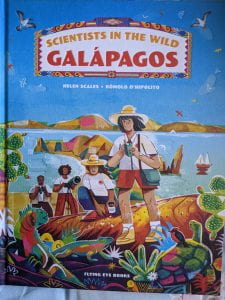
Flying Eye, 9781838740931
Scientist in the Wild: Galapagos by Helen Scales and Romolo D’Hipolito
This gives us a look at one of the most inaccessible areas of the world, although this is less the case than it was even 30 years ago. The book is framed around the work of 7 scientists, aboard the research ship Sula and it seems to be aimed at KS1 and lower KS2. The book is full of illustrations and the sections of text are short, with an overview and then more detail about specific creatures or environments. Some of the facts that we see are quite shocking; for instance there used to be a population of about 1,000 on the islands, but this has grown to about 30,000 and there are around 250,000 visitors (tourists) every year. In the book we get to see the work of the scientists and to build our understanding of the changes that mankind is bringing to the area. There is a fascinating section about how they tag Tiger Sharks and I was really taken by the description of something called “tonic immobility”, where the shark is turned on its back and goes into a trance like state. The whole book is full of amazing information about the wildlife, flora and history of the Galapagos. We always think of the islands in relation to Charles Darwin, but this title shows us that adaption to the environment is still going on and that we have lots of valuable lessons to learn about saving the natural world.
Earth’s Incredible Places: The Great barrier Reef by Helen Scales and Lisk Feng

Flying Eye, 9781838741471
This second title is about one of the most incredible natural wonders of the world and one that is suffering because of the climate change that is affecting water temperatures in the oceans. Again, this is aimed at lower KS2 and also KS1 , with the same clarity of text, but with longer sections which require a bit more reading stamina. The author has not limited herself to the coral and fish who live in the reef, but also covers the links with Aboriginal people throughout history and then the arrival of westerners and the impact that they made on the environment. The sections about plastic pollution and about the use of fossil fuels brings the story up to date and highlights the issues that need addressing urgently. The illustrations are so full of colour and life, but they are all very different, depending on the subject that is being discussed. For example the section about the Aboriginal people and some of their beliefs, is very subdued with a sense that they hark back to the wonderful rock drawings that are found in tribal lands. In contrast, we have the bright, vivid colours of creatures such as starfish and octopuses, whilst the cover itself uses extremely bright, almost fluorescent colours, that really catch the eye.
Both of these books make wonderful introductions to the oceans that surround us and the immense diversity of wildlife, both flora and fauna that are found there. However, they also highlight the importance of trying to improve the quality of the environment and not destroy the world in which we live. These books will make an excellent addition to the school or public library and will spark discussion about “Wonderful Water”.

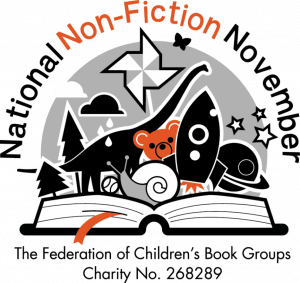 National Non-Fiction November is a celebration of Information books that has been around for the last few years and which grew out of National Non-Fiction Day. It was founded by the Federation of Children’s book Groups and they are still responsible for its success.
National Non-Fiction November is a celebration of Information books that has been around for the last few years and which grew out of National Non-Fiction Day. It was founded by the Federation of Children’s book Groups and they are still responsible for its success.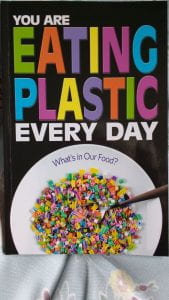 text is easily accessible and looks at the world wide impact that plastic is having on our environment. The illustrations are full of impact and many young readers will find the images quite shocking. the book has been published in 2020 and it is good to see that the pictures and text reflect current realities. This is actually quite a short book, with only 57 pages of text, but it also has a good glossary, index and bibliography. The only thing I would say about the bibliography is that some of the reference might be aimed at a more mature audience than the book itself. However this will make an excellent addition to the school library and act as a great introduction to further research.
text is easily accessible and looks at the world wide impact that plastic is having on our environment. The illustrations are full of impact and many young readers will find the images quite shocking. the book has been published in 2020 and it is good to see that the pictures and text reflect current realities. This is actually quite a short book, with only 57 pages of text, but it also has a good glossary, index and bibliography. The only thing I would say about the bibliography is that some of the reference might be aimed at a more mature audience than the book itself. However this will make an excellent addition to the school library and act as a great introduction to further research.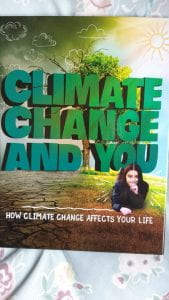 audience. I would definitely place it in the lower KS2 range, although it could be used in KS1 to support an introduction to this topic. The text is well laid out, with short sentences, large font and a pictures on every double page spread. I particularly like the highlighted terms in the main text which are then explained in the glossary at the back; this makes linking the two areas quite easy. There is a short index as well as the glossary and a very short list other other books and websites’ although all the other books are Raintree titles. The publication date is shown as 2021, so I have been lucky in being shown it at such an early time. It is definitely one of those titles that will become a staple of the school library and classroom and it will provide a good introduction to a vital subject.
audience. I would definitely place it in the lower KS2 range, although it could be used in KS1 to support an introduction to this topic. The text is well laid out, with short sentences, large font and a pictures on every double page spread. I particularly like the highlighted terms in the main text which are then explained in the glossary at the back; this makes linking the two areas quite easy. There is a short index as well as the glossary and a very short list other other books and websites’ although all the other books are Raintree titles. The publication date is shown as 2021, so I have been lucky in being shown it at such an early time. It is definitely one of those titles that will become a staple of the school library and classroom and it will provide a good introduction to a vital subject.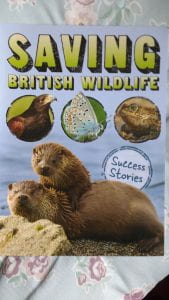 rather gives the hint that this is going to be about positive changes that have happened over the last few years. The book starts out by talking about a survey that was undertaken in 2016, which resulted in a report called “The State of Nature“. It provided the frightening statistic that 56% of our wildlife was in decline. The book then goes on to explain the various issues which have affected our wildlife and the ways that organizations and individuals have tried to improve matters. Most of the book looks at different types of wildlife, so there is a chapter on birds, mammals, fish, insects and amphibians, before looking at those species that are still in danger. This book also uses the highlighted text and glossary link system as well as having a good index and bibliography with quite a few online links. Once again this book is aimed at KS2 and the wonderful illustrations and attractive layout make it very appealing.
rather gives the hint that this is going to be about positive changes that have happened over the last few years. The book starts out by talking about a survey that was undertaken in 2016, which resulted in a report called “The State of Nature“. It provided the frightening statistic that 56% of our wildlife was in decline. The book then goes on to explain the various issues which have affected our wildlife and the ways that organizations and individuals have tried to improve matters. Most of the book looks at different types of wildlife, so there is a chapter on birds, mammals, fish, insects and amphibians, before looking at those species that are still in danger. This book also uses the highlighted text and glossary link system as well as having a good index and bibliography with quite a few online links. Once again this book is aimed at KS2 and the wonderful illustrations and attractive layout make it very appealing.